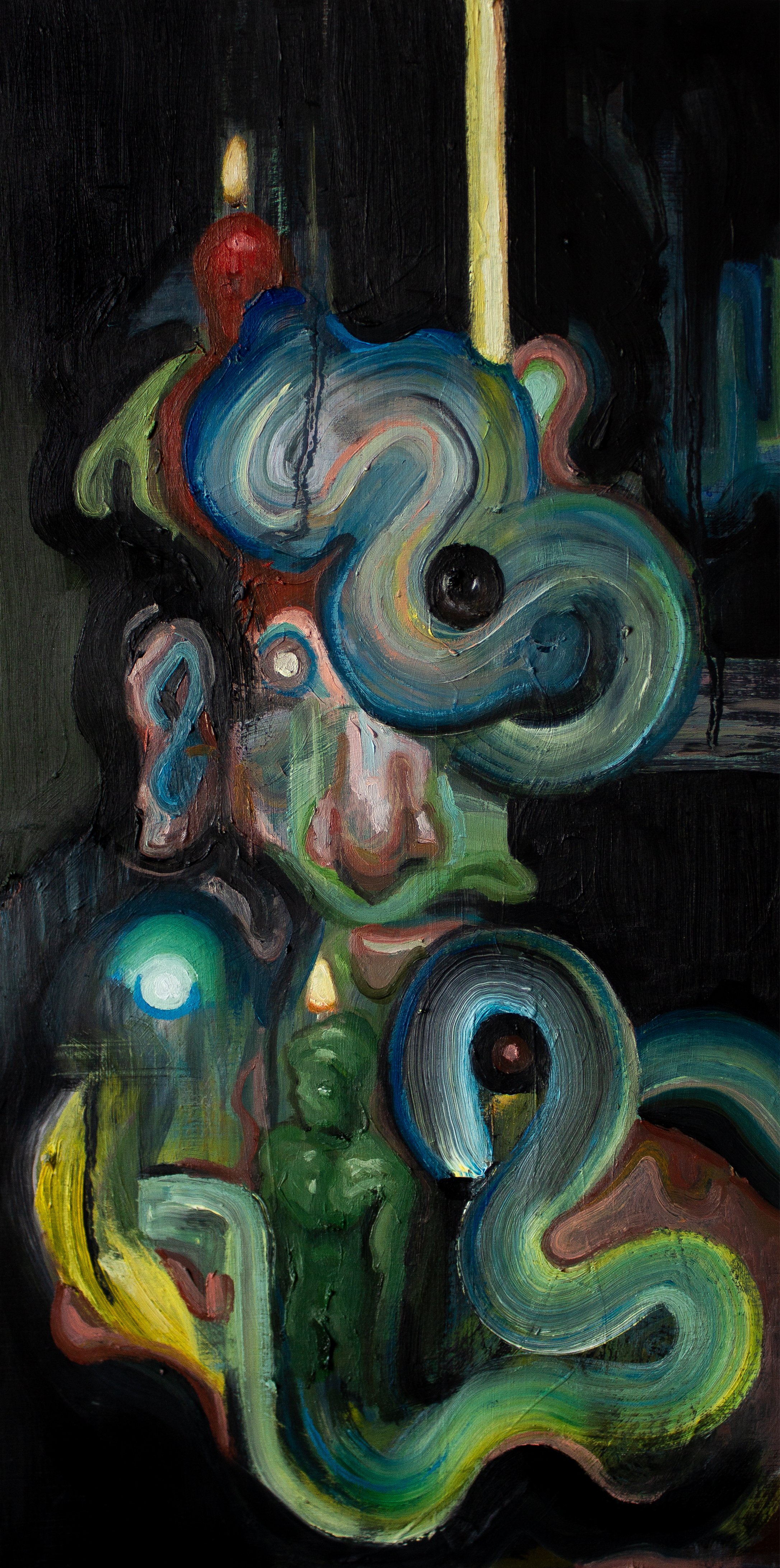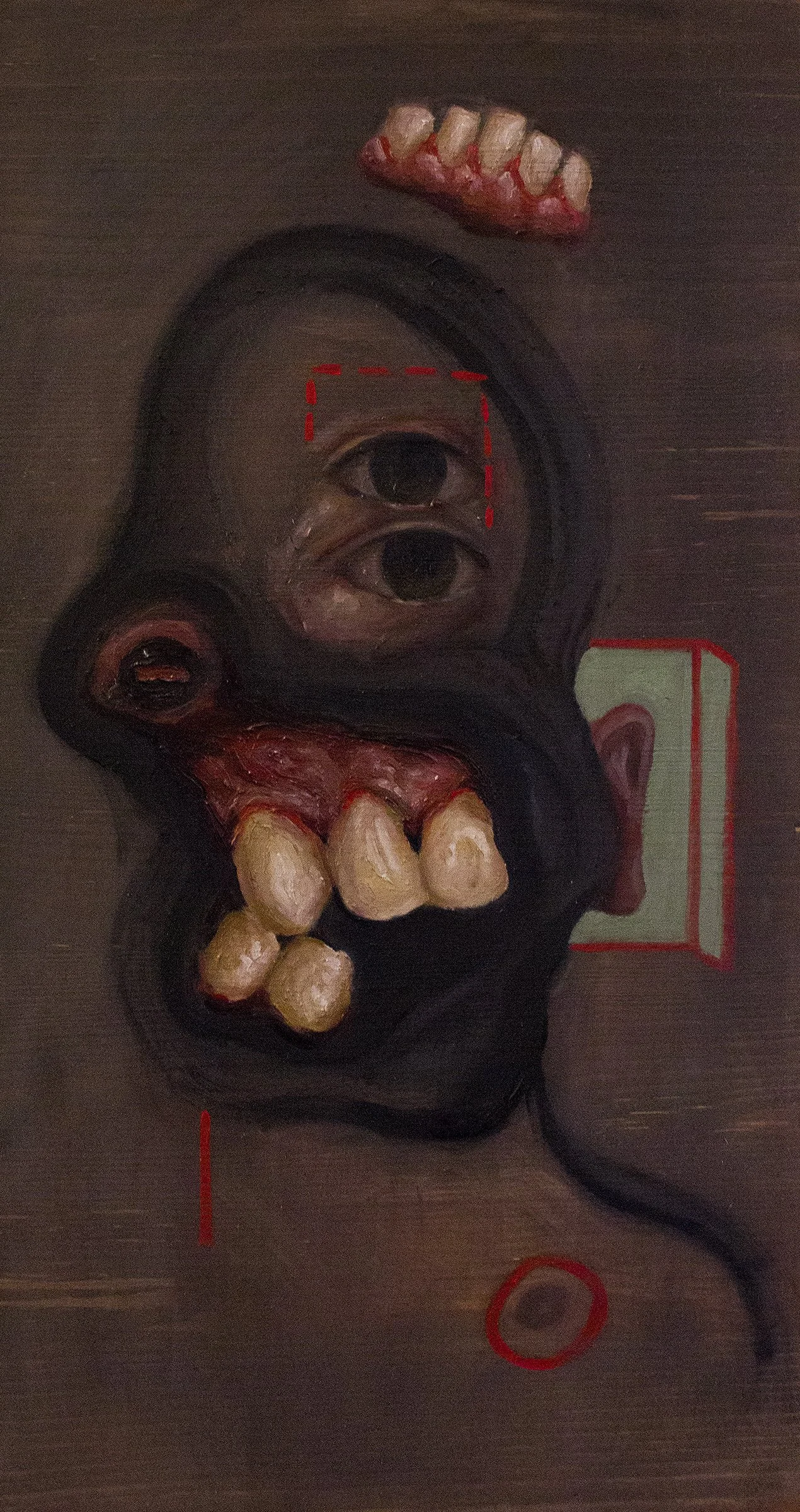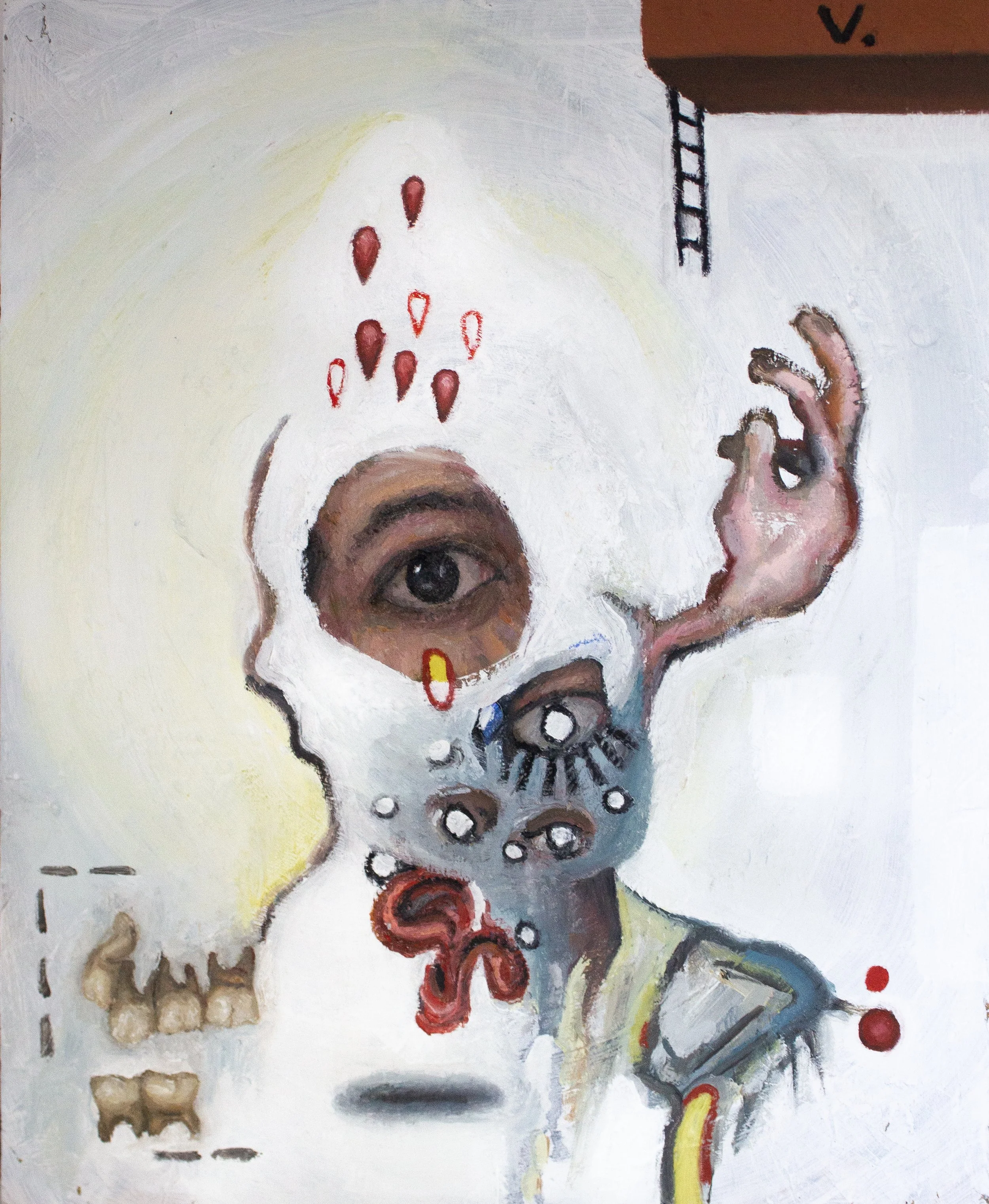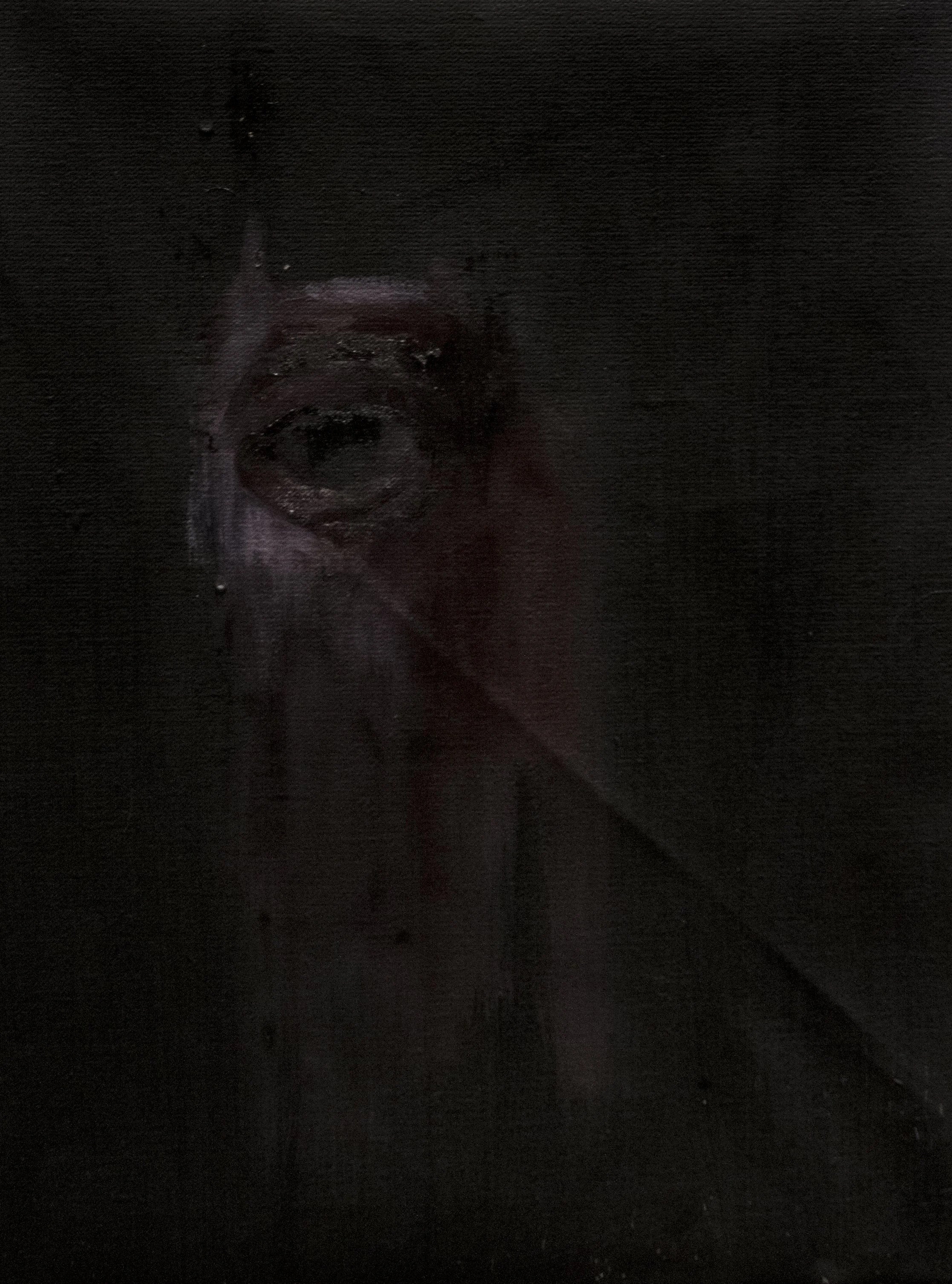Armando Cabba
Armando Cabba
Armando Cabba’s artistry is a captivating journey through the intricate dance of portraiture and abstraction. His canvases are realms where the visceral and the ethereal coalesce, presenting a duality that is both profound and accessible. Known predominantly for his portraits, Cabba's works are more than mere representations; they are emotional landscapes painted with the vibrant palette of human experience.
Each portrait is a narrative, a story untold but deeply felt. The figures in his paintings, though rooted in the figurative tradition, are not confined by it. They leap beyond the canvas, bringing with them an array of colors that are reminiscent of Cabba's expressive "Brut" series. The subjects are alive, their eyes holding secrets, their postures a silent language of their inner worlds. This is where Cabba excels, in the delicate interplay of shadow and light, the meticulous attention to the curve of a lip or the arch of an eyebrow. Every brushstroke is intentional, deliberate yet fluid, a testament to his profound engagement with every subject.
Cabba's art does not shy away from the raw and the real. His portraits embody a candor that is often missing in contemporary portraiture. His figures are not idealized; they bear the marks of life, making them resonate with viewers on a personal level. This authenticity is amplified by his bold use of color. His palette is not just a visual choice but an emotional one, with hues that underscore the mood of each piece. Blues that whisper of melancholy, reds that scream of passion, and yellows that hum with quiet joy—each color is a word in the visual vocabulary that Cabba has mastered.
In his abstraction, Cabba allows his brush to wander, to explore the spaces between form and formlessness. Here, the canvas becomes a playground for texture and tone. He invites the viewer to find their own meaning, to engage with the art on an intuitive level. The abstract works are conversations in color, dialogues in texture, and in them, one can hear the echoes of Cabba's portraits. There is a harmony in his oeuvre, a continuity that flows from the eyes of his subjects to the sweeping gestures of his abstract pieces.
Cabba's works are also a study in contrasts. Where one piece may be a tempest of emotion, another may be a quiet study in serenity. This balance is no accident. It is a reflection of the artist's understanding that life is a spectrum, that beauty is found not just in joy but also in sorrow. His series often reflect this, capturing the full gamut of human expression. It is as though each series of works is a chapter in a larger story, one that Cabba is narrating with each stroke of his brush.
Cabba's art is not static. It grows, evolves, and becomes. It is as though with each new work, he is reaching deeper into the well of human experience and drawing out something more profound, more poignant. This evolution is perhaps most evident in the subtle nuances he crafts. A slight tilt of the head, the positioning of hands, the fall of light across the skin—all these elements are crafted with a care that speaks to Cabba's dedication to his craft.
Armando Cabba's oeuvre is a testament to the power of visual storytelling. His portraits are more than likenesses; they are mirrors reflecting the multifaceted nature of humanity. His abstract works are not mere explorations of form but are imbued with the same soulful depth that characterizes his figurative pieces. As an artist, Cabba stands out for his ability to meld the tangible with the intangible, to paint not just the human form but the human condition. Each canvas is an invitation to pause, to reflect, and to feel—a remarkable achievement in the often transient world of art.
Armando Cabba's artistic expression is an intimate portrayal of the human condition, where each canvas becomes a confessional space, and every subject, a storyteller. The intimacy of his work is palpable, drawing viewers into a personal encounter with each piece. It's as though the subjects are conversing with the onlooker, their silent monologues conveyed through the strokes of Cabba's empathetic brush.
Cabba's skill is especially evident in the eyes of his subjects. They are never just eyes; they are windows to souls, to stories untold, to silent struggles and unspoken joys. These eyes do not just reflect light; they absorb the viewer into their depth, challenging them to look closer, to understand more. It's a characteristic that imbues his work with a haunting presence, the gaze of his subjects following one long after the initial encounter.
This sense of connection is further enhanced by Cabba's adept use of light and shadow. His paintings demonstrate an understanding of light not just as a physical phenomenon but as an emotional catalyst. Light caresses the subjects, highlights their features, and creates an ambiance that is almost tangible. Shadows, on the other hand, are wielded with equal precision, carving depth and adding a contemplative gravity to the portraits. They whisper of the unknown, of the aspects of self that remain hidden.
Cabba's brushwork varies from delicate to bold, a rhythmic variation that adds a musical quality to his work. His portraits are composed much like a symphony, with crescendos of color and decrescendos into subtlety. In his abstract works, this musicality is unleashed in full, with compositions that feel like visual improvisations, jazz made paint. They defy strict form, yet they resonate with the same emotional tenor as his more structured works.
His series are often a reflection of his personal journey, a visual diary where each painting marks a moment in time. This autobiographical element adds a layer of depth to his work, as if each canvas is a page turned, a chapter concluded, or a new story begun. It allows viewers to travel with him, to witness the evolution of his internal landscape as it manifests in vivid color and emotive form.
In essence, Armando Cabba's art is not just seen; it is experienced. It is a dialogue between artist and audience, a shared experience of the spectrum of emotions that define us. His works are enduring not just for their visual appeal but for their ability to touch the soul, to stir the psyche, and to provoke introspection. They stand as a testament to his unwavering commitment to exploring the complexities of human expression, making his portfolio a remarkable contribution to the contemporary art scene.
By Marta Puig
Editor Contemporary Art Curator Magazine












